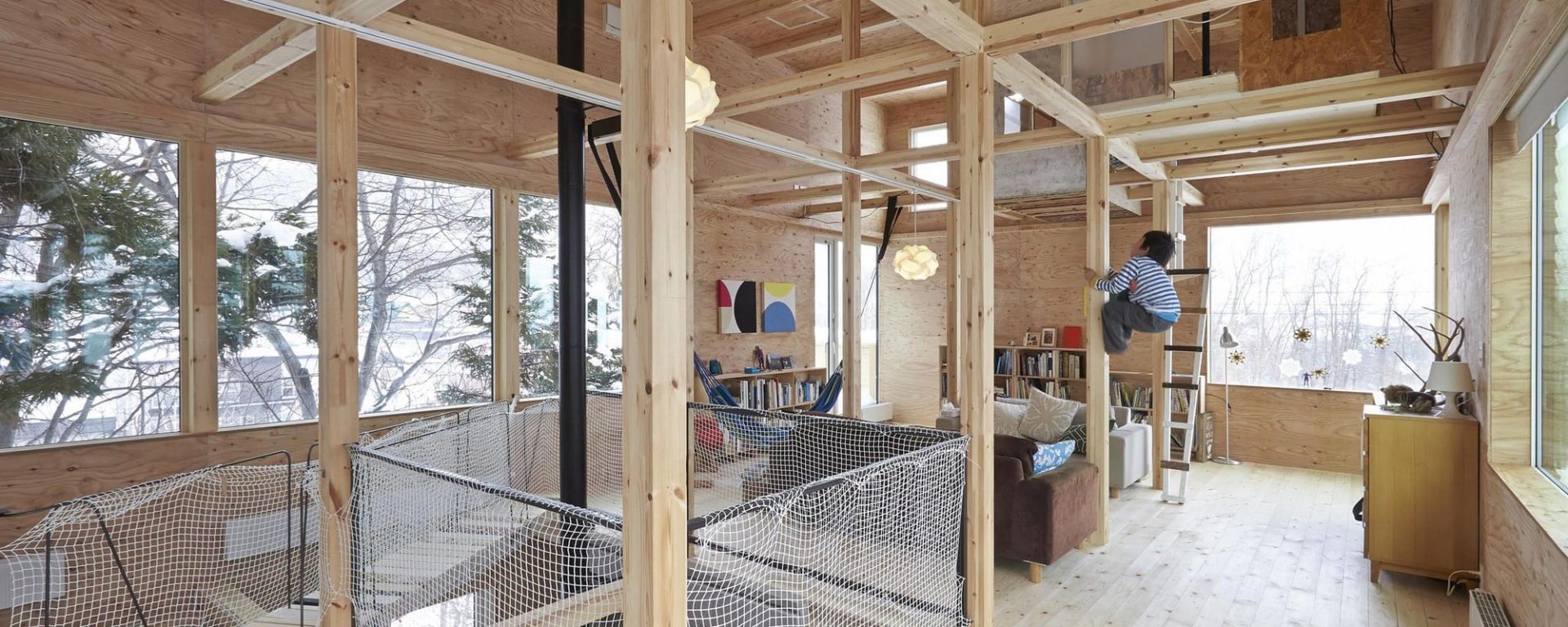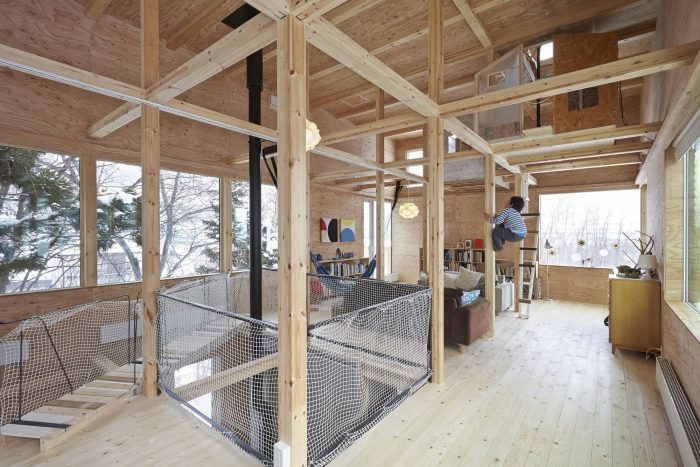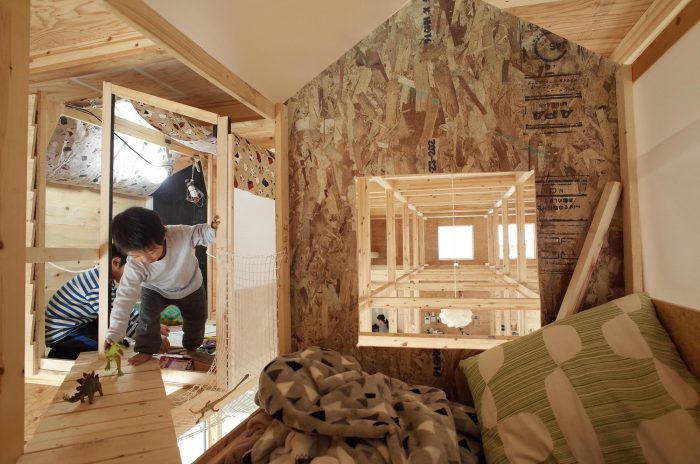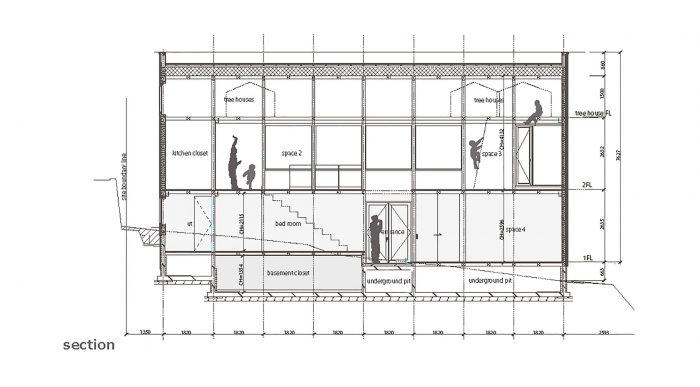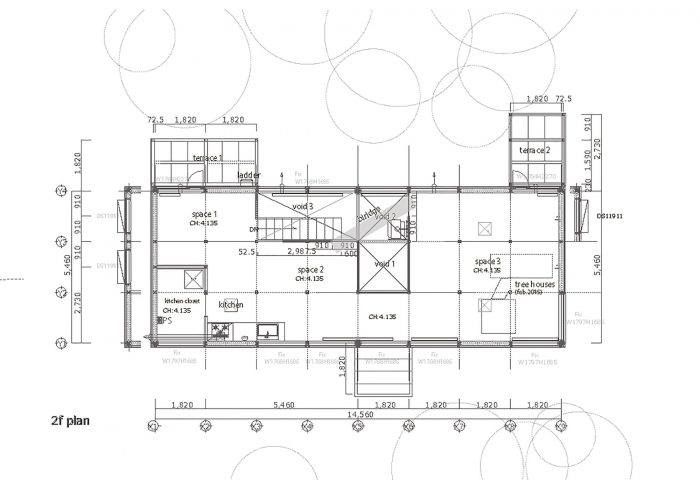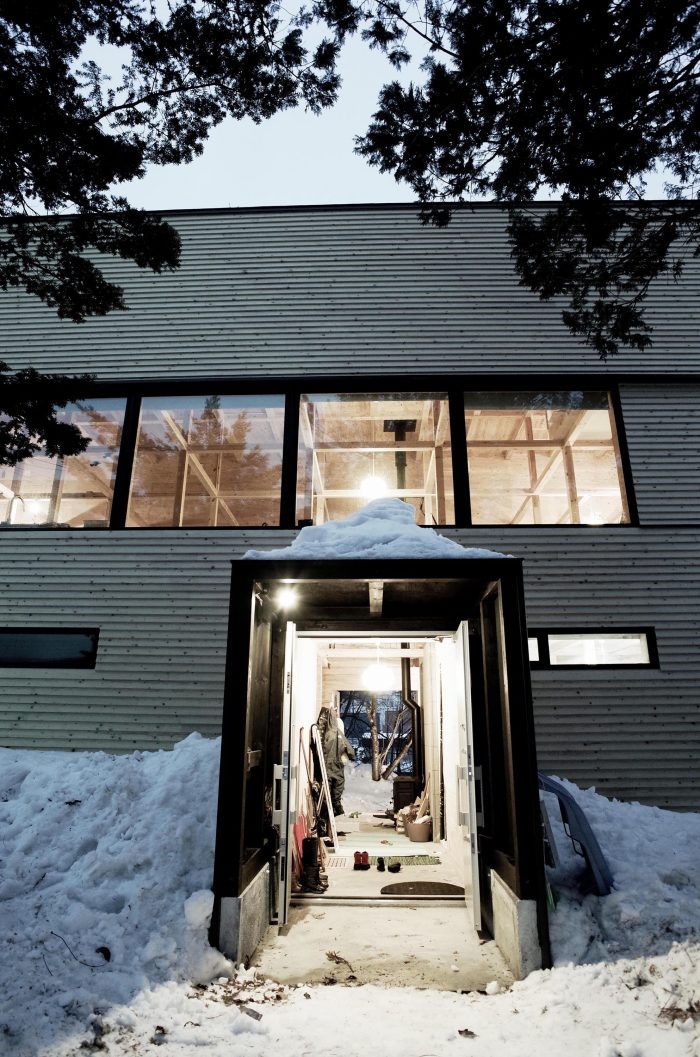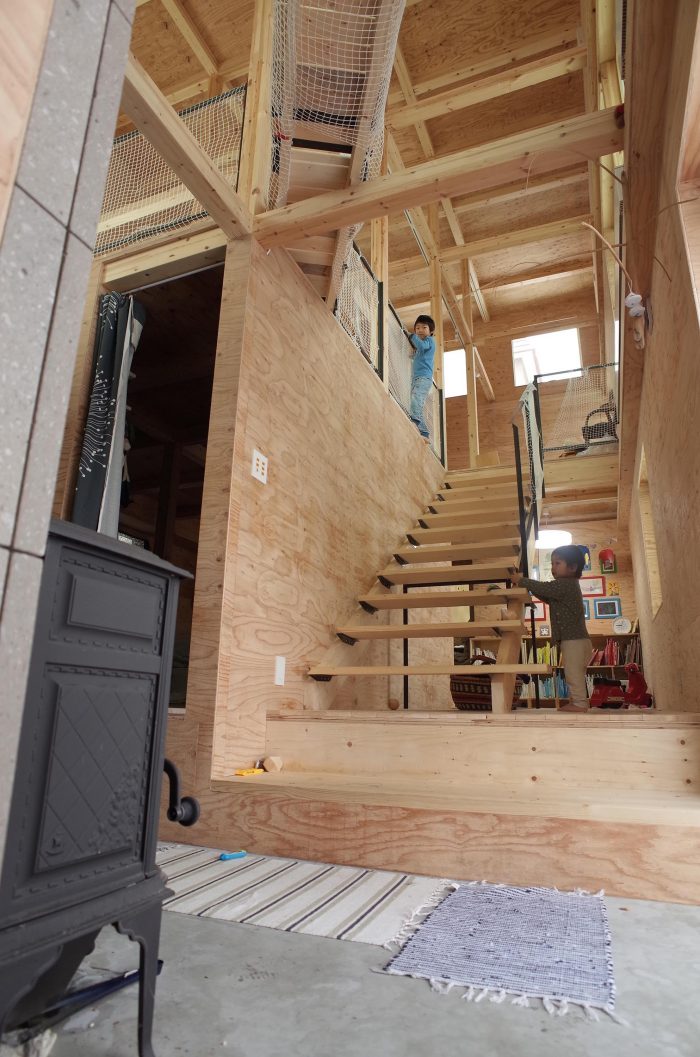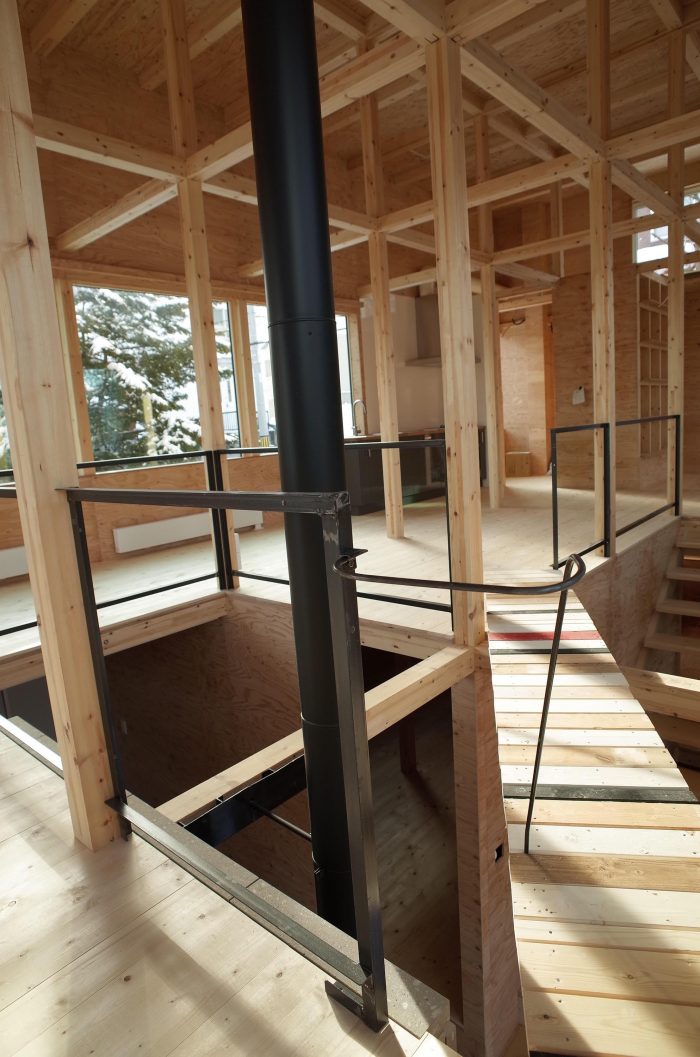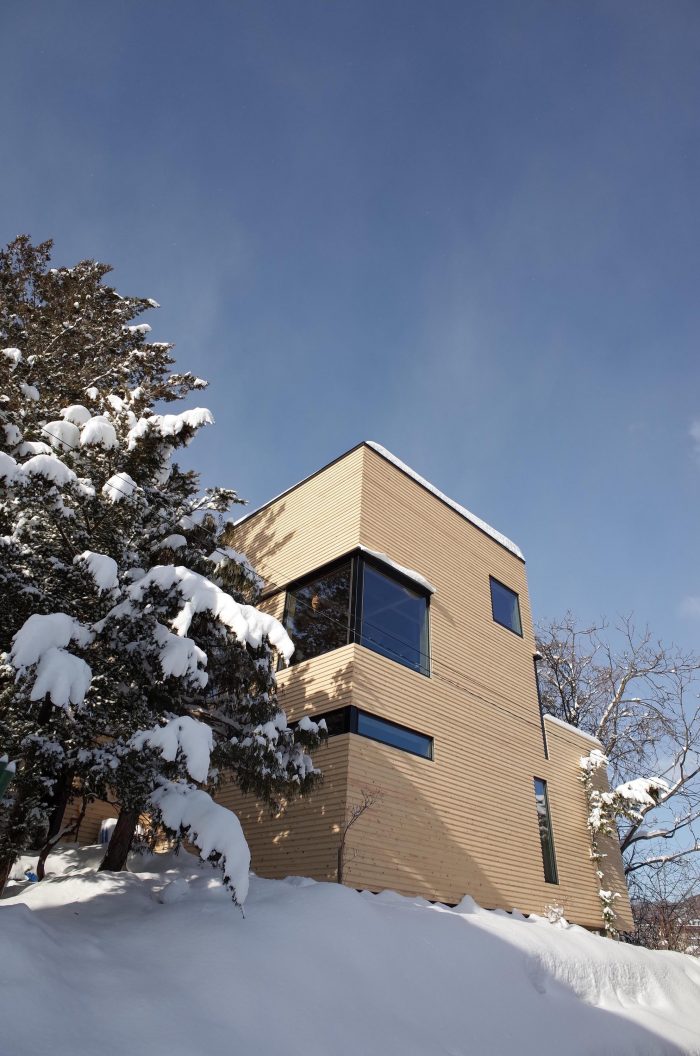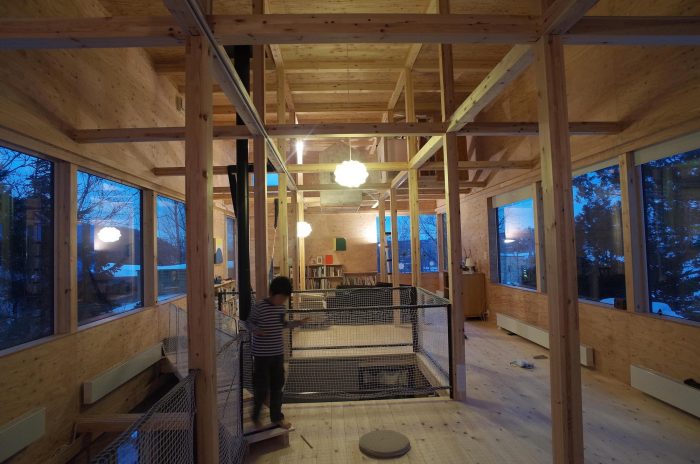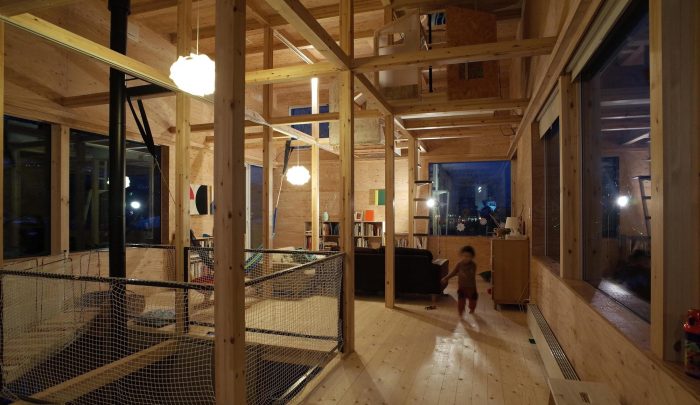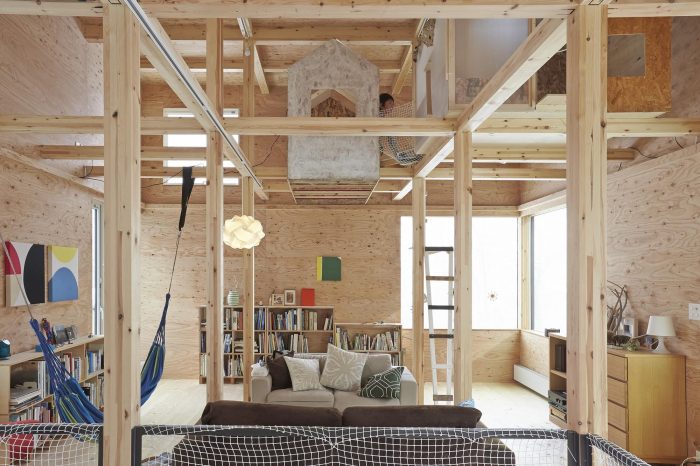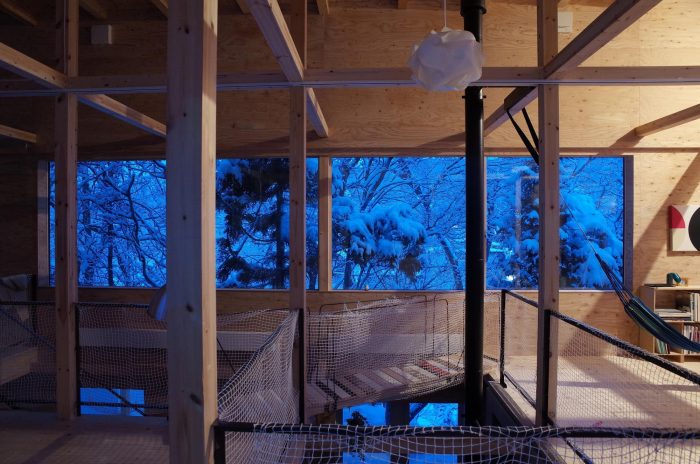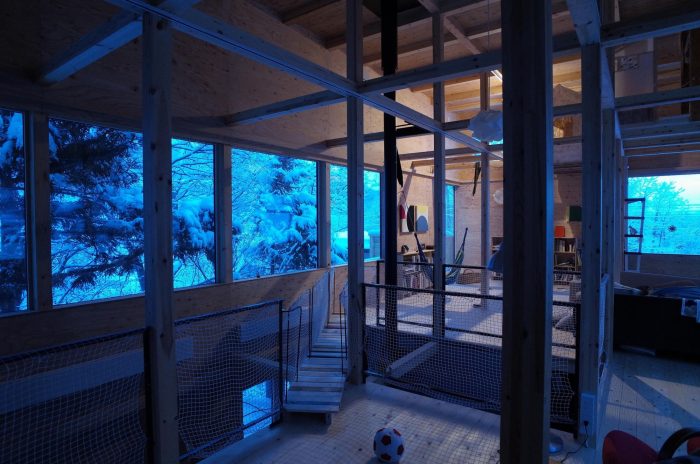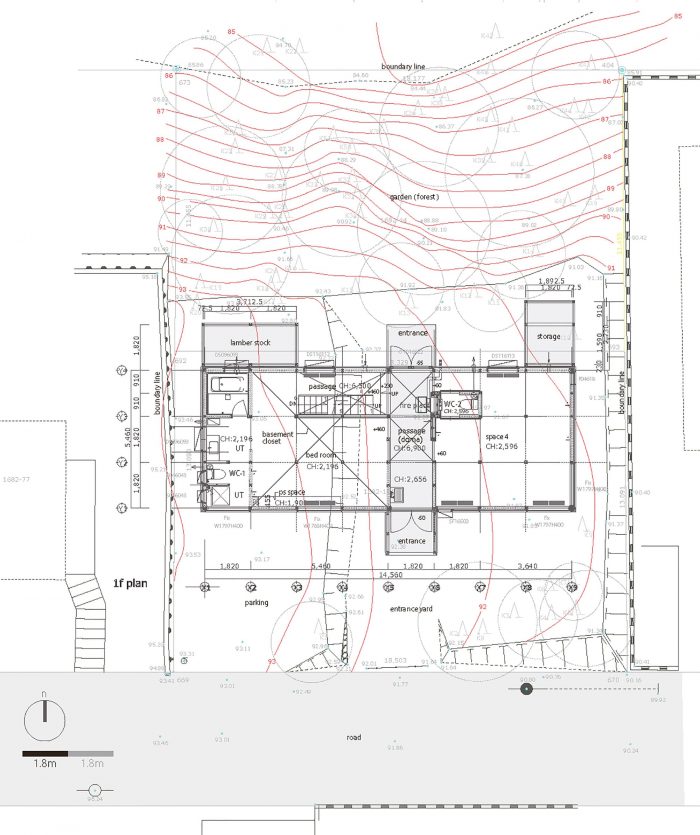如果这所房子能说话,它就会说:”我的梦想永远不会完成”。
日本最北端被雪覆盖的地区就是这座房子的所在地。 由于这里在隆冬时节通常会堆积5米厚的积雪,所以在设计这所房子时,我的首要任务是为其内部提供高效的供暖。 同时,我希望有这样的建筑目的,在漫长的冬季为住在里面的家庭创造一个高档次的愉快时光。
If this house could speak, it would say, “I dream never to be completed.”
Japan’s snow covered northernmost region is where this house stands. Since it is typical in midwinter for 5 meters of snow to pile up here, it was my priority to provide efficient heating inside this house when I designed it. At the same time, I wanted to have the architectural purpose that creates an upscale and enjoyable time for the family who lives in it during a long winter.
这个房子渴望有一个不断发展的内部空间。 永远不觉得完整的梦想描述了它希望与美丽的风景、季节的变化以及称之为家的家庭的每个历史章节充分协调。说到谁改变了它,客户是我,我是建筑师和环境艺术家(自建)。内部的不完整是客户的要求。这个房子的最初步骤在2015年1月完成。
This house longs to have an ever-evolving interior space. The dream of never feeling complete describes its desire to adequately harmonize with the beautiful scenic views, the changes of the seasons, as well as each chapter in history of the family who calls it home. Talking of who change it, the client is me who is architect & environmental artist (self builder). The interior incompletion is client’s request. This house initial step completed at January 2015.
柱子的安装间隔为1.82米。 这个间隔与日本传统的建筑尺寸相同,被称为 “ichi-ken”(榻榻米的长度)。 这个长度,”ichi-ken “不仅在结构上合理,而且也是日本生产的木材的标准长度。事实上,日本大多数历史上的木制建筑都是用这种间隔建造的。
The pillars are installed at intervals of 1.82m. The interval is the same as the Japanese traditional size in architecture called “ichi-ken” (the length of a tatami mat). The length, “ichi-ken” is not only structurally sound, but is also the standard length of timbers produced in Japan. In fact, Most of the historical wooden buildings in Japan are constructed with these intervals.
柱子的直径为105毫米,被称为 “Sansun-gobu”,是日本传统的标准尺寸。 从地板到梁顶的长度为2.70米,被称为 “圭尺”,这也是日本传统建筑的标准尺寸之一。 简而言之,我是根据日本传统建筑的标准尺寸来设计这个房子的。
The diameter of the pillars is 105mm and is called “Sansun-gobu,” a Japanese traditional standard size. The length from the floor to the top of the beam is 2.70m and is called “kyu-shaku”, which is also one of the Japanese traditional standard sizes in architecture. In short, I designed this house based on Japanese traditional standard sizes in architecture.
利用柱子和横梁,可以在这所房子里增加树屋。 通过窗外不断变化的室外风景和家庭历史的每个阶段,房子的内部外观会随着树屋的增减而变化。 毕竟,这个房子和房子的客户总是梦想着保持不完整。
It is possible to add tree houses inside this home utilizing the pillars and beams. The inside look of the house transforms by adding or removing the tree houses with the changing outdoor sceneries viewed through the windows and each stage of the history of the family. After all, this house & house’s client always dreams to stay incomplete.
Architects: Ryo Yamada
Area : 82 m²
Year : 2015
Photographs :Yoshiaki Maezawa
City:SAPPORO
Country:Japan

